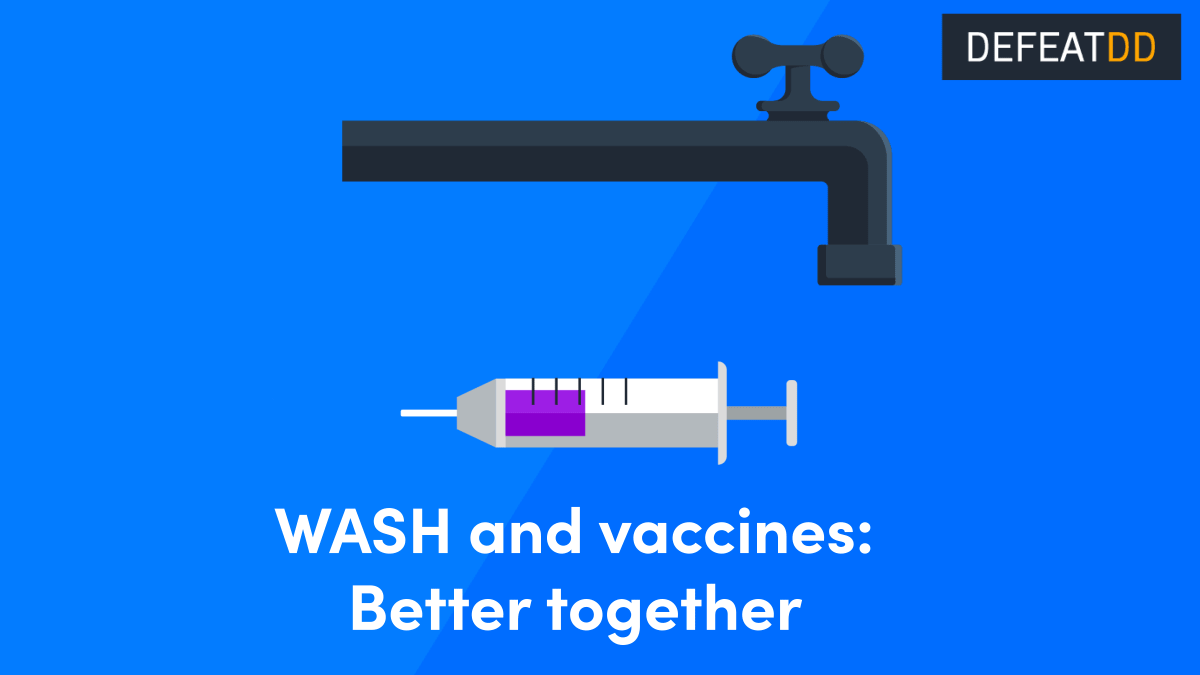
The reinforcing protection of WASH and vaccines

Water-related health issues like diarrhea and typhoid sit at the intersection of two interventions: vaccination and water, sanitation, and hygiene (WASH).
Vaccines and WASH are both essential components of primary health care necessary for comprehensive protection from disease. Not every pathogen is vaccine-preventable, leaving WASH as the primary method of prevention, while some pathogens—such as rotavirus—persist even in settings with advanced WASH, necessitating protection through vaccination.
It’s clear that, to achieve universal health coverage, communities need dual protection from both WASH and vaccines. But did you also know that WASH and vaccines make each other stronger? When both are present, protection goes farther. Here’s how.
 Help share the message about WASH and vaccines: access this graphic here.How does WASH help improve vaccination?
Help share the message about WASH and vaccines: access this graphic here.How does WASH help improve vaccination?
- Research shows that the performance of some oral vaccines may be stronger in communities with improved WASH. In rural Zimbabwe, for example, a study compared rotavirus immunity levels in infants that had just received oral rotavirus vaccine with the infants’ access to various WASH services in their homes. The study found that improvements in household WASH led to modest, but significant increases in rotavirus immunity following rotavirus vaccination. This finding also reflects the growing evidence of environmental enteric dysfunction—a condition caused by poor WASH and frequent exposure to enteric pathogens—causing suboptimal immune responses to vaccination and increased susceptibility to disease.
- 1 in 5 health care facilities around the world lacks any type of sanitation service. Improving WASH in healthcare facilities—a WHO-designated urgent health challenge for the next decade—makes the facilities cleaner and safer, which can have benefits for vaccination, too. Because many vaccinations are administered at health care facilities, the safety and quality of WASH in facilities can impact the safety of families’ visits to facilities for vaccinations. Improving WASH in healthcare facilities, as in communities, improves the quality of care and reduces the chance of infection for both patients and health workers.
How do vaccines help improve WASH?
- Immunization sessions can provide direct opportunities for WASH education. In Nepal, for example, a groundbreaking approach to integrated WASH and vaccines utilized immunization clinic visits as a point of contact for female community health volunteers to promote good hygiene behaviors to improve children’s and families’ health. It worked, too—prevalence of hygiene behaviors improved from 2% to 53%, immunization coverage increased, and diarrhea prevalence decreased.
Implementing and coordinating both WASH and vaccines, even without a formal, integrated program, is better than having just one. Research from WaterAid and PATH found that combining clean water, decent household toilets and good hygiene with routine childhood vaccinations and nutrition support could potentially save the lives of as many as 697,000 children annually and prevent billions of cases of diarrhea and pneumonia in children under five.
WASH and vaccines are better together. Whether in drips, drops, or streams, achieving universal health coverage will require a flow of coordination across both sectors.


